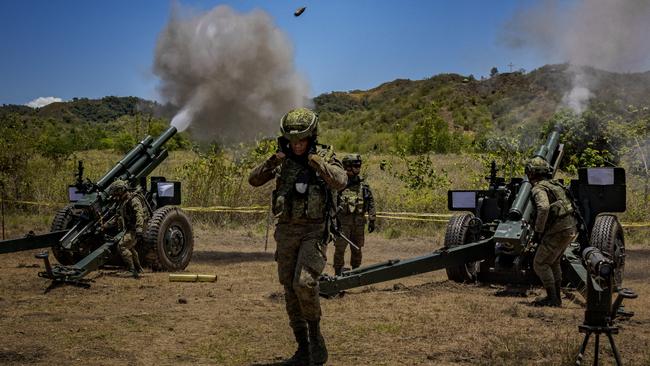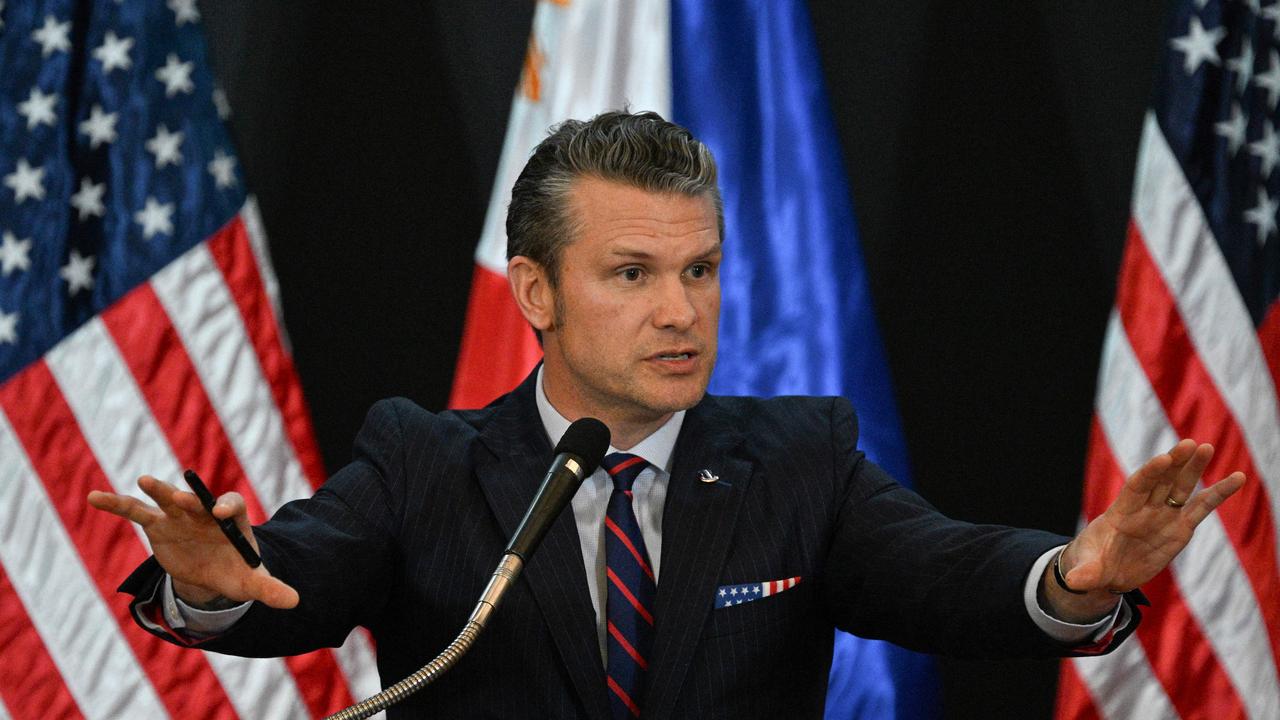The dark-horse alliance racing forward to take on China
Four years ago, the US and its oldest ally in Asia were close to breaking up. The Philippines had declared it wanted to exit a defence pact between the countries.

Four years ago, the US and its oldest ally in Asia were close to breaking up. The Philippines had declared it wanted to exit a cornerstone defence pact between the countries. Then-president Rodrigo Duterte favoured a realignment toward Beijing.
Today, the alliance is at its strongest in decades. The striking turnaround is the result of a US charm offensive, a new leader in Manila and forceful Chinese actions against The Philippines in the South China Sea.
Some 16,000 American and Filipino military personnel are training in annual exercises called Balikatan, which began on April 22 and will feature America’s Himars rocket launcher and Stinger anti-aircraft missiles. The goal is to make sure they can smoothly operate side-by-side if they have to go to war together.
Earlier this month, Philippine President Ferdinand Marcos Jr made his second visit to the White House in less than a year. Days before that, navy ships and aircraft from the US, Japan, Australia and The Philippines held joint drills in the South China Sea – a strong show of force in support of Manila. Just weeks prior, on a trip to The Philippines, US Secretary of State Antony Blinken lauded what he called an extraordinary expansion in ties, echoing his counterpart Enrique Manalo, who said: “We’ve been on hyperdrive over the past year or so.” The shift marks a win for the Biden administration’s strategy to counter China by shoring up America’s alliances.
“China continues to overplay its hand and drive Manila right into the arms of Washington,” said Zack Cooper, a senior fellow at the American Enterprise Institute whose research focuses on US strategy in Asia. Still, he said he was surprised by how quickly the relationship has accelerated in a short period.
The US gained access to four additional Philippine military bases last year, taking the total to nine. A number of them are at locations that would be significant if a conflict were to break out in the South China Sea or the Taiwan Strait, two major flashpoints in Asia. The bases aren’t US-controlled, but they are sites the American military would seek to use during hostilities to disperse its forces, launch aircraft and missiles, and complicate Beijing’s calculations.
Washington is pouring tens of millions of dollars into upgrading runways and building warehouses, fuel storage and barracks at the sites, some of which are fairly basic. The Biden administration is seeking $US128m ($195m) more for construction.
The sites represent efforts by the two sides to build out places where they can operate and exercise together, Admiral John Aquilino, head of the US Indo-Pacific Command, said in remarks to reporters last week. “And then ultimately, if need be, and the mutual-defence treaty were to be activated, those are places where we would fight together,” he said.
That is valuable because America has only a few operating bases in the region, said Mr Cooper of the American Enterprise Institute. In a conflict, its well-known facilities such as Kadena Air Base in Japan and Andersen Air Force Base in the US territory of Guam would likely be targets of Chinese attack, he said.
“The real challenge for the US is: How do you diversify away from the handful of facilities that we’ve used in Asia over decades?” he said.
Mr Cooper said The Philippines was a perfect option because of its location in the centre of the first island chain, referring to a stretch of territory from the Japanese archipelago through Taiwan to The Philippines and the South China Sea.
US forces are getting more familiar with the Philippine military sites via a busy schedule of drills. Participating in the Balikatan exercises are a group of US marines designed to rapidly move forward in a conflict with China and hop from island to island. Members of the Marine Littoral Regiment will train on Philippine islands less than 160km from Taiwan.
In another strong signal, the US Army’s newest mid-range missile launcher arrived in The Philippines this month for its first Indo-Pacific outing. From the northern Philippines, the weapon system, called Typhon, could reach targets including Taiwan, Chinese bases in the South China Sea, sites along the Chinese mainland coast and even some military infrastructure deeper inside mainland territory, said Collin Koh, a senior fellow at the S. Rajaratnam School of International Studies in Singapore.
“What to me is surprising is the choice of the first deployment – it’s actually The Philippines instead of so-called much closer allies in Asia like Japan,” said Mr Koh. “We are seeing a rather unprecedented reinvigoration of US-Philippines defence relations.”
That process has unfolded especially rapidly over the past year. China has made it increasingly difficult for The Philippines to resupply a military outpost Manila maintains in the South China Sea, on a reef Beijing also claims. Chinese coast guard and maritime militia ships have collided with Philippine resupply boats and blasted them with water cannons, injuring Filipino personnel on two occasions last month.
The Philippines is pushing back by broadcasting Chinese tactics to the world and drawing closer to the US. Washington in return has shown strong support to make the case it is a reliable ally, to deter China from escalating further and to ensure the South China Sea remains open for business.
“For decades, the alliance had been rather moribund,” said Jay Batongbacal, director of the Institute for Maritime Affairs and Law of the Sea in The Philippines. “Now, because of the way that China has been asserting itself in the South China Sea, this has given an opportunity to The Philippines to draw on the alliance and leverage it for developing its own defence capabilities.”
The Philippines military – long focused on internal security operations – is finally getting the training and experience it needs for external defence, he said.
China’s 2012 seizure of a South China Sea site has weighed heavily on the US-Philippines alliance. American officials were involved behind the scenes in negotiations during the weeks-long standoff between Chinese and Philippine ships over Scarborough Shoal. When Beijing took control of the site, Manila felt the US hadn’t done enough to defend its ally.
At the time, the US also declined to say whether the countries’ mutual-defence treaty covered an attack in the South China Sea, deepening distrust in The Philippines where many believe US equivocation emboldened China. In Washington, officials worried that Manila, counting on US support, might make a mistake or take an overzealous step, leaving the US to fight China.
Relations deteriorated further when Mr Duterte came to power in The Philippines in 2016. Mr Duterte was deeply distrustful of the US, crimped military exercises between the two and stalled US upgrades of Philippine military sites. He also underplayed his country’s differences with Beijing in the South China Sea, where China was turning reefs into military bases.
As the US began to see China as its No.1 threat, the Trump administration turned to fix some of the long-festering grievances. Washington stated clearly in 2019 that the mutual-defence treaty applied to an attack on The Philippines in the South China Sea – a position the Biden administration has since repeated dozens of times.
Mr Marcos’s 2022 election presented an opening – and the US went for it. President Joe Biden met Mr Marcos on the sidelines of a United Nations event a few months later, marking the first of seven meetings to date between Mr Marcos and either Mr Biden or US Vice-President Kamala Harris. A parade of US officials has made its way to The Philippines since 2022.
Mr Koh said the Biden administration was trying to make the most of Mr Marcos’s time in office, unsure of how political shifts in Washington and Manila might change the dynamic in the future.
“You want to make sure everything is in place such that you could future proof the relationship,” he said.
The Wall Street Journal



To join the conversation, please log in. Don't have an account? Register
Join the conversation, you are commenting as Logout